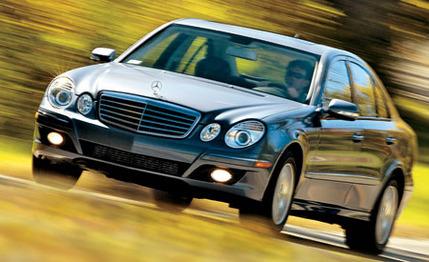
 Long-Term Road Test
Long-Term Road Test
We all base our new-vehicle purchase decisions on a dizzying range of personal priorities, but over the long haul, the trait that endears a ride to any owner is its reliability. That's the secret ingredient in cars like the Honda Accord and Toyota Camry. Like Tonto, the Masked Man's faithful Native American companion, they're always there, always ready, and they never complain. And they never become sources of irritation by requiring service outside of the regular factory-prescribed intervals.
Although the latest Mitsubishi Eclipse is based on Galant sedan foundations, it obviously won't be confused with an Accord or Camry. Its practicality index is lower, its visibility index is higher, and during its 18-month, 40,000-mile tenure in the C/D long-term test fleet, its logbook reflected accumulated reactions that were decidedly mixed.
But in the end, the car goes back to Mitsubishi with the coveted C/D gold star of approval, thanks to an operating record that was basically spotless. The logbook shows five service visits — all for scheduled maintenance, none requiring anything beyond factory-specified minimums. The total came to $432, a fair percentage of which was attributable to oil changes and tire rotations. It's hard for any owner to harbor unkind thoughts about a car that performs so faithfully.
On the other hand, our long-term test cars don't really have owners — just lots of different drivers. A corps of diverse drivers with no proprietary stake in a particular automobile has no trouble at all making unflattering observations, and the Eclipse's logbook had plenty of 'em.
The biggest gripe, one that was essentially universal, was torque steer. The Eclipse GT is equipped with a lusty 3.8-liter V-6 (263 horsepower at 5750 rpm, 260 pound-feet of torque at 4500 rpm), and this was enough to produce considerable steering drama at full throttle in the first two cogs of the six-speed manual transmission. A couple of commentators observed that this trait, with a little familiarity, was "manageable." Manageable, okay. Endearing, no way, and in fact it deterred us from adding a limited-slip differential to the car's mechanical inventory. The Eclipse could use a little more roll stiffness, in our opinion, and that soft point made it too easy to induce wheelspin during hard cornering. A limited slip would enhance corner exits, but it would likely also magnify the torque-steer problem, and we didn't think it would be worth the trade-off. Instead, our "Baubles and Bolt-Ons" ran to electronics.
That lusty V-6 also came in for some complaints about noise. Its barroom baritone added a welcome element of urgency in hard driving, but its song was relentless, and that ongoing growl could abrade nerves in routine running or freeway cruising.
In addition to the torque-steer complaints, several drivers found the Eclipse to be a little skittish when the pavement was damp. This is more a function of tires than anything else, although we find it peculiar that the OEM Goodyear RS-A all-season rubber didn't do a better job in this regard. It gave a decent account of itself on the skidpad — 0.82 g at the outset of the long-term test, 0.84 at the conclusion — and also contributed to very good wrap-up-test braking numbers: 169 feet from 70 mph.
Part of the problem may have been due to a touchy throttle tip-in, another source of multiple logbook complaints. It was tricky to keep the front tires from chirping at launch, a trait that provoked grins on first encounter but got old in a hurry.
Yet another entry on the dynamic debit list was the Eclipse's turning circle, a vast 40 feet. To be fair, this is a weak suit of most front-drive cars, although the Eclipse's turnaround sweep is bigger than most.
There were other operator complaints from the cockpit. Limited rear-quarter sightlines drew frequent comment, as did the high dashboard cowl, and the trendy aluminum-clad foot pedals weren't popular when drivers were operating with damp shoes.
A more controversial interior element was the seating. Some drivers, including a guy with a chronic nagging lower-back problem, found the chairs to be just fine. Others, including your humble narrator — a person who rarely has problems with seats — found themselves squirming when the drive got past the first hour or so.
By this time you're probably asking, so what's to like?